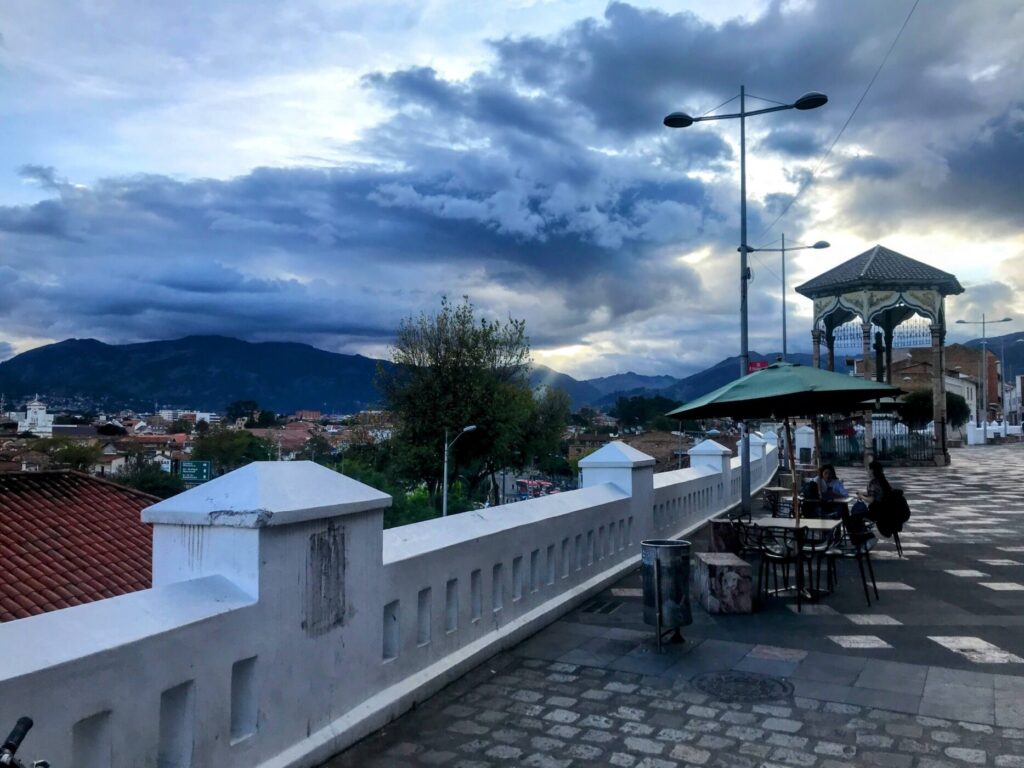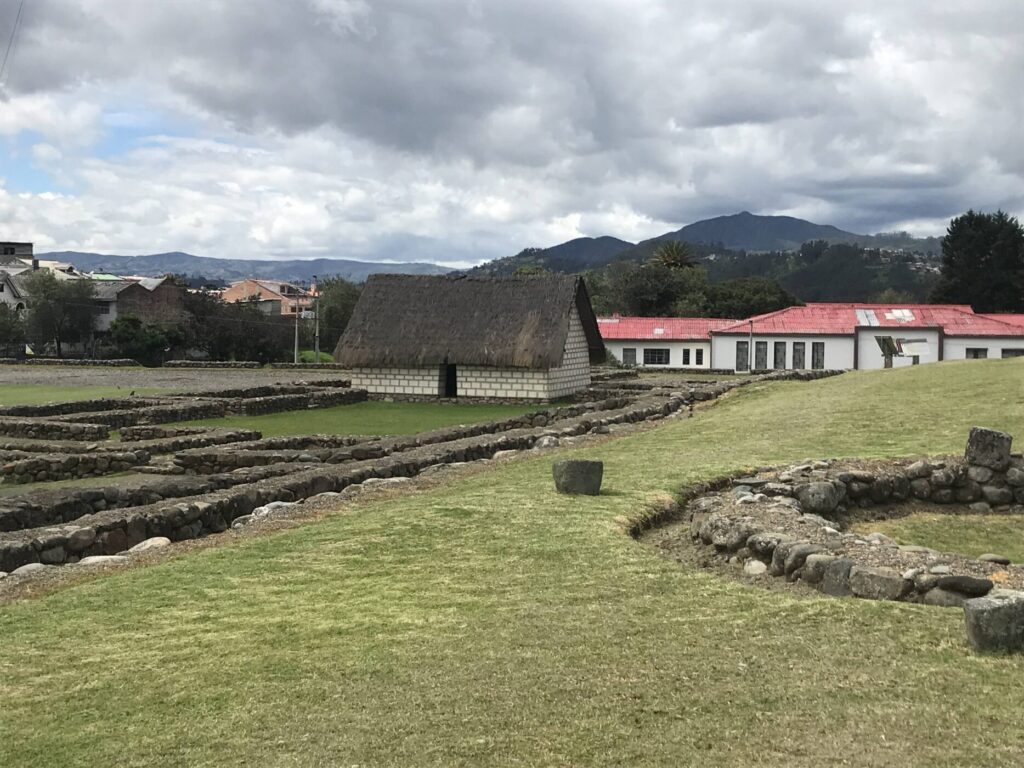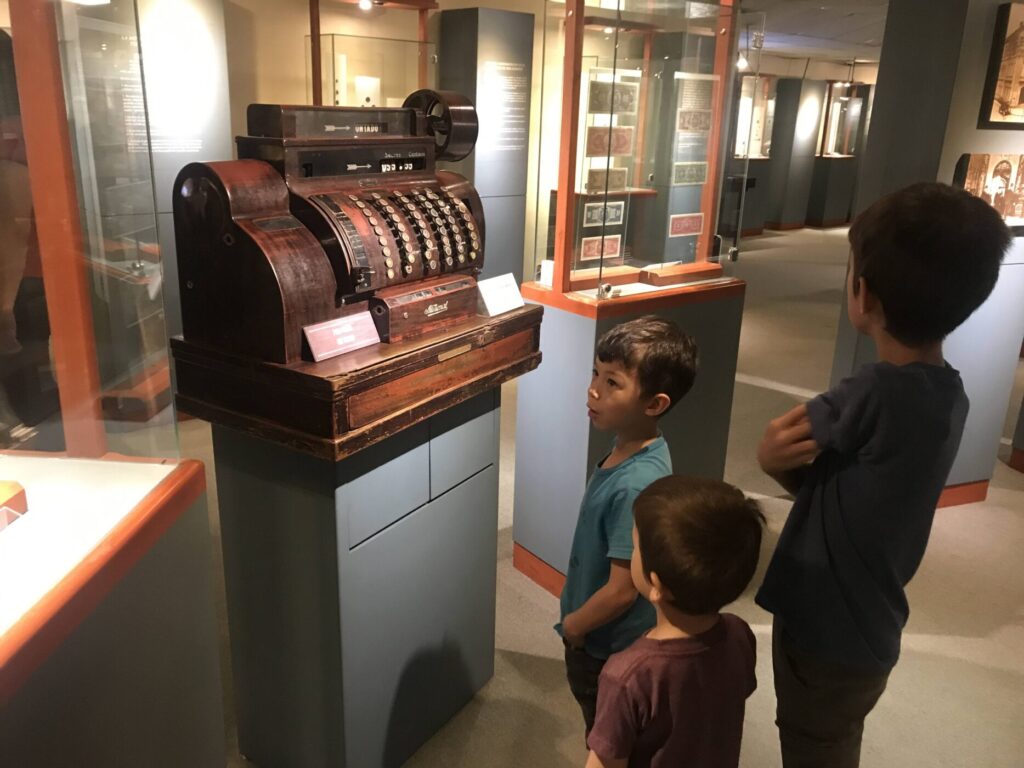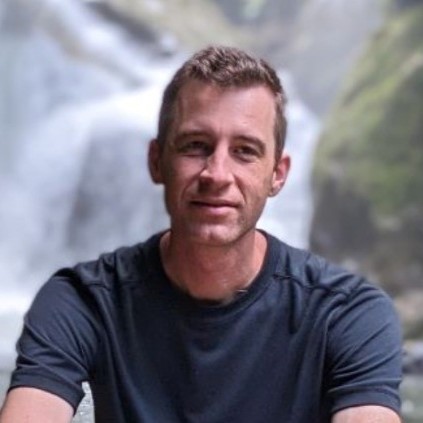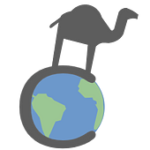Ecuador Road Trip Journal – Week 2: Through the Sierra

This is a daily journal of our second week on the road. Our family (mom, dad, and three young boys) spent three weeks driving around Ecuador in a rental car. We hoped to sample three of Ecuador’s four main regions: the jungle (el Oriente), the mountains (la sierra) and the coast (la costa). None of it was planned or reserved ahead of time. We made up our route as we went and allowed ourselves to veer off on a tangent if that’s where the wind took us.
A Map of Our Progress
Here is a Google map of our second week’s progress. You can click on the markers where I included short descriptions and pictures.
Day 8: Drive Up to Baños
Down the road from our hostel was the waterfall Hola Vida. A pleasant 45-minute hike through the jungle took us to this sheer vertical water drop into a pool. Liuan was hot and wanted to get in, but we hadn’t brought bathing suits. She didn’t want to drench her clothes, and we hadn’t seen a soul the entire morning… so, you can imagine what happened next. Matt also briefly joined in, sans fig leaf. The kids, meanwhile, gathered pretty white rocks on the edge.
As we walked back along the path, very refreshed, we crossed paths with a mom, a dad, and two little girls. (“Wow, that would have been embarrassing,” Matt murmured to Liuan.) A moment later we had to step to the side as a whole bus load of tourists hiked through. Dang.
Next stop was Mirador Indichuris, about a 10 minute drive from our hostel at the convergence of the rivers Pastaza and Puyo. It was quite touristy, with tunnels in the mountain opening up at the mouths of tribal faces carved in the hillside, and huge swings (columpios). The kids couldn’t get enough of these swings. A short walk up the hill took us to the lookout with a breathtaking view of the Pastazo river as it flowed from the foot of the Andes into the Amazon. It’s one of those pictures you think of when you hear the word “Amazon rainforest.”
To get to Baños, our stop for the night, we drove through Shell, a place of lore from our years as Wheaton students. It’s where two Wheaton missionaries flew out of to evangelize a Waorani tribe in the jungle. They were killed by tribal members upon landing and became legendary martyrs of the faith. Today, Shell is a bustling town where we stopped for a local ice cream flavor, pineapple with cheese (pretty good!). We also stopped at the “Shell” gas station for our first tank refill of the trip (came out to $12).
Baños was mentioned to us by many folks familiar with Ecuador as a place to visit. They are famous for their hot springs, hence the name of the town, Baños de Agua Santa (baths of holy waters). It’s also way to easy to make dad jokes about the town, which Matt is very guilty of. Baños also translates as bathrooms. Hence, when anyone needs to go potty, “Oh look, we already made it to Baños!” And when we finally arrived at the town, “getting to Baños is such a relief!”
A huge tourist complex of adventure sports has been built up as well, featuring canopying, zip lining, bungee jumping, Tarzan swings, canyoning, and more. For us, the place was too crowded and pandering.
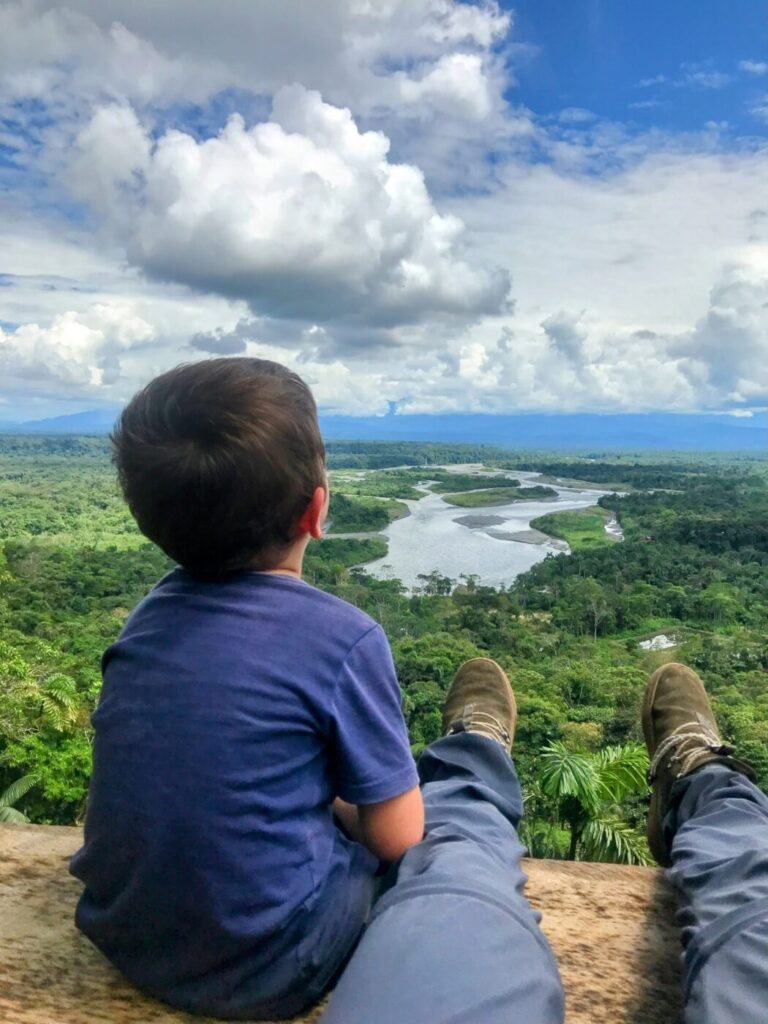
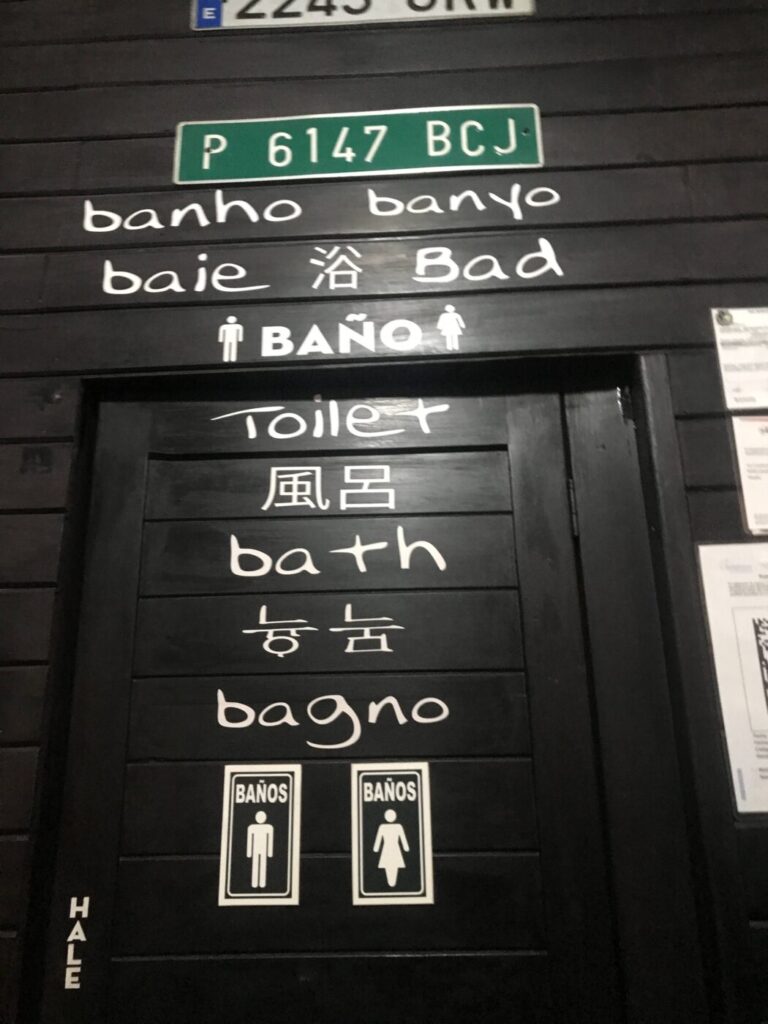
Day 9: The Devil’s Cauldron
It was another work day for Liuan.
Matt and the boys spent the morning huffing it up 712 stairs to the Virgen Mirador in Baños. The views overlooking Baños were amazing. Afterward, we rewarded ourselves with coffee and a big chocolate muffin at Honey Coffee & Teas, a very high end looking coffee shop that didn’t disappoint.
Toward evening, we drove out to the Pailon del Diablo (the Devil’s Cauldron), a bone vibrating waterfall that drops into a sheer rocky pit and sprays water everywhere. You get good and wet. The park is very well developed with hung bridges and decks lining the cliff edges that get you right up to next to the falls.
In the evening, we walked past a candy shop where earlier we had seen a man stretching taffy at the entrance. Apparently, homemade taffy is a specialty of Baños. Oliver had been hankering to buy some with a $1 coin he had found at a previous hostel. We made him conduct the transaction to practice his Spanish. When it came time to pay the $1 for his pack of rainbow colored taffy, he hesitated.
“Go on, pay her,” we urged. He bent down, took off his shoe, and retrieved the dollar coin hidden within. The older woman tried to control her shock. “Bien seguro (very safe),” she quipped.
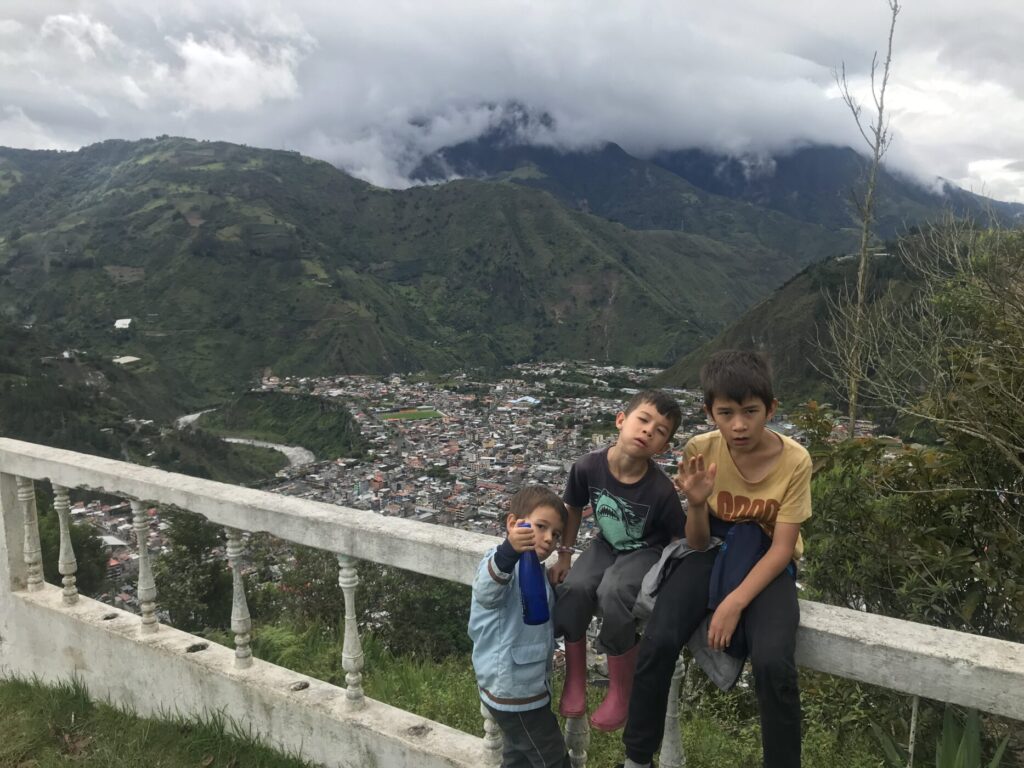
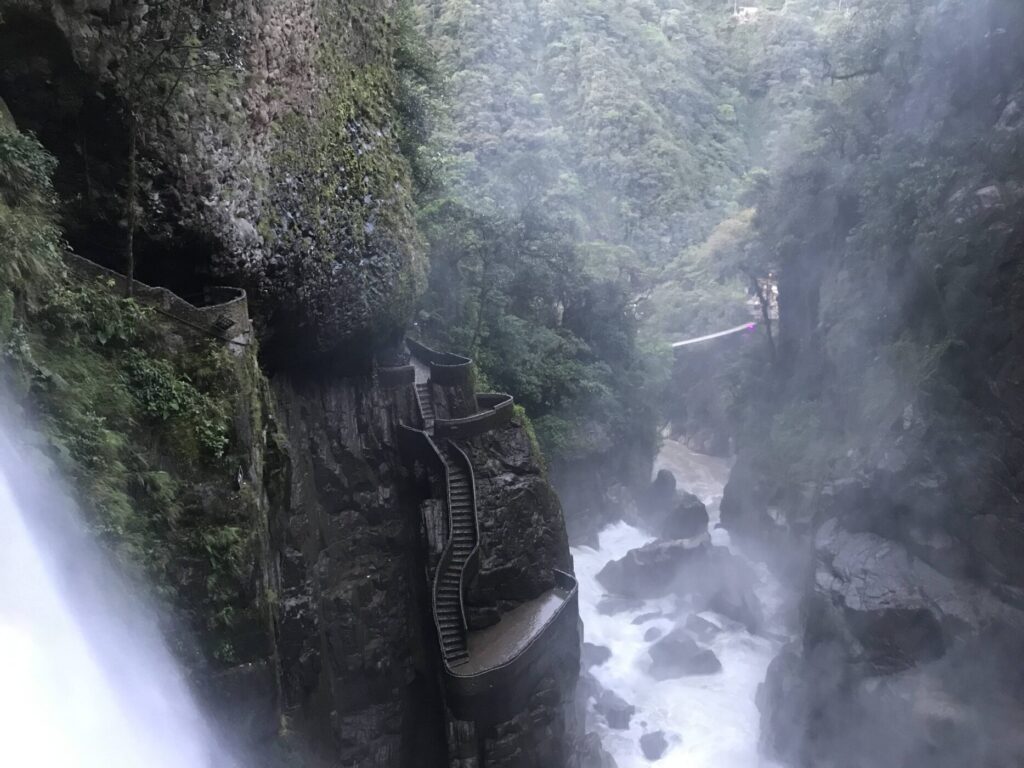
Day 10: Stalking Chimborazo
This evening we sat by the fireplace with a hot cup of chocolate wearing sweaters and winter coats. Two days ago we skinny dipped in a river pool surrounded by palm trees (see Day 8). That just goes to show how quickly you can move from one climate to another in Ecuador. In Chicago terms, it was like going from mid-July to late November.
We started out our day in Baños and drove up toward Chimborazo, Ecuador’s highest peak. We are more or less aclimated to La Paz elevations, which are between 12,000 – 13,000 ft. As we ascended up to the base, Matt was already feeling headachy and queasy (Oliver was fine this time). Partly because of this, and partly because thick clouds completely obscured that behemoth volcano, we abandoned our attempt to hike around it and sightsee.
We continued on to Riobamba where we stopped for lunch and groceries. The women running the restaurant were very interested in us, asked a lot of questions, and gave us complimentary coffee and shots of hard sugar cane liquor. They told us we could see Chimborazo from their roof, so they led us through the back door and up the stairs. Disappointingly, it was still completely hidden.
Our AirBnB 60 km south of Riobamba was in a very rural pocket of the Andes. Soon after we arrived, Liuan spotted some indigenous women marching out into the field behind our cabin to milk their cows. She couldn’t resist meeting them (and secretly hoped to get a photo with them). They were very friendly and loved the boys. The kids always serve as a convenient icebreaker for meeting new people.
After they asked us about the differences between America and Ecuador (uh, where to begin?) and kindly offered us fresh milk, Liuan spied them furtively giggling amongst themselves. Finally one came forward with their request. Would we let them take a photo with our family?
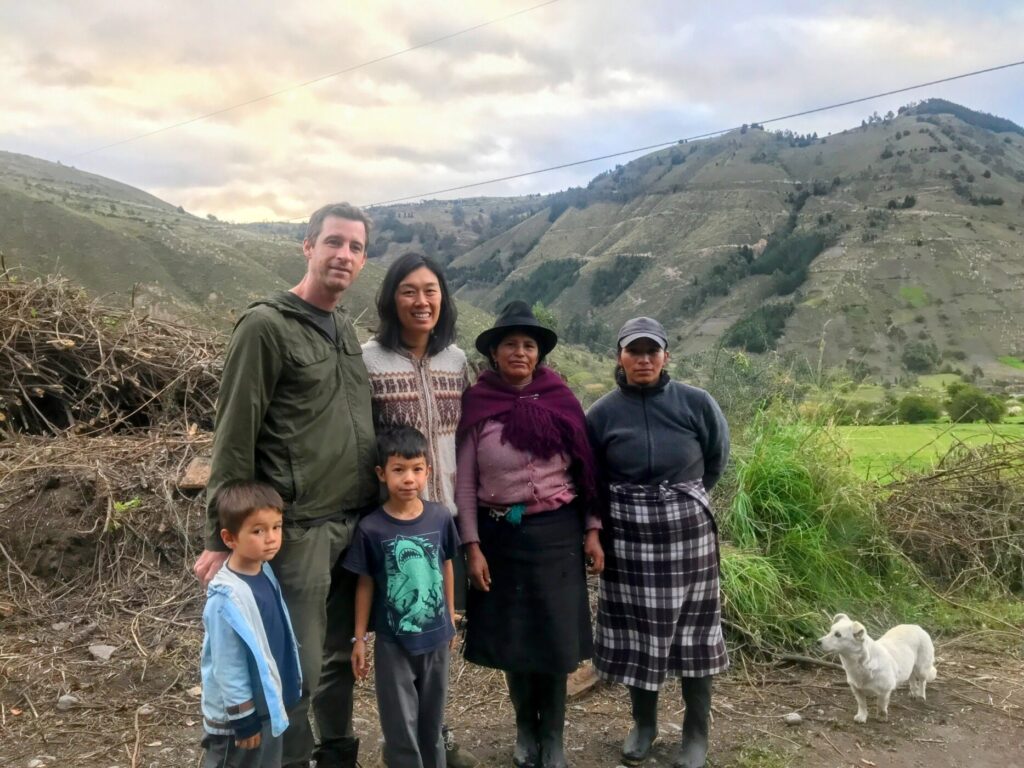
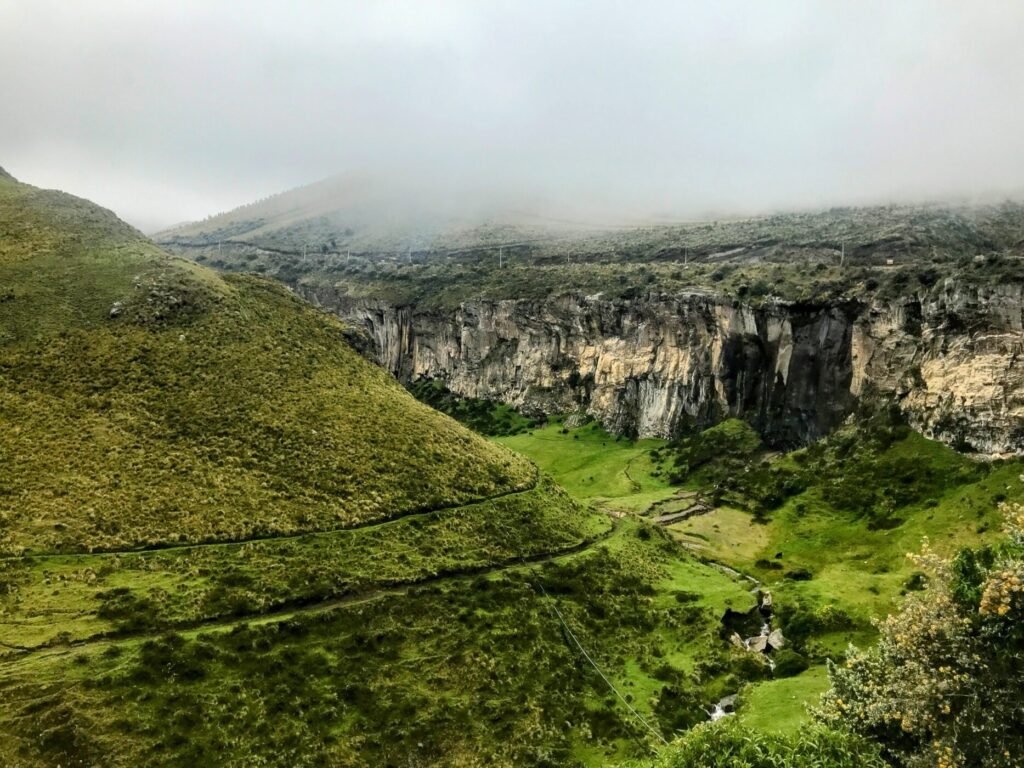
Day 11: Bad Luck and Good Luck
We attempted to hike at high-altitude lagoons (Lagunas de Atillo) about half-hour drive down the road, but when we neared the lagoons they were shrouded in mist. We also couldn’t find any trails, beyond a very short walk to a lookout point. Unluckily, with the weather we weren’t able to see much, but at least it was an authentic Andean weather experience.
On the way back we attempted to stop by several “convenience stores,” i.e. rooms out of peoples’ tiny cement-block houses where they sold the most basic essentials, like cooking oil, eggs, detergent, etc. We were looking for un fosforero (a lighter) to start a fire in the cabin that night. Apparently, no one carried such a luxury, so we had settle for a 10 cent box of matches.
When the sun came out in the afternoon, Liuan took a little jaunt up the hill where she saw some locals harvesting strawberries. She struck up a conversation with the ladies.
“Are you traveling?” one woman asked in Spanish (the other two older women didn’t appear to speak Spanish).
“Yes, for a year around South America,” Liuan replied.
“You have good luck,” the woman said. “Are you here alone?”
“No I’m with my husband and three kids.”
“Is he also Chinese?”
“No, he’s American, gringo,” Liuan said.
“You have good luck,” the woman said.
Liuan spent the rest of the afternoon thinking about the chasm of life experiences between her and the indigenous women we’ve met on the trip, how what appears to us and our peers as “normal life” is to these native Ecuadorian farmworkers akin to winning the lottery of life.
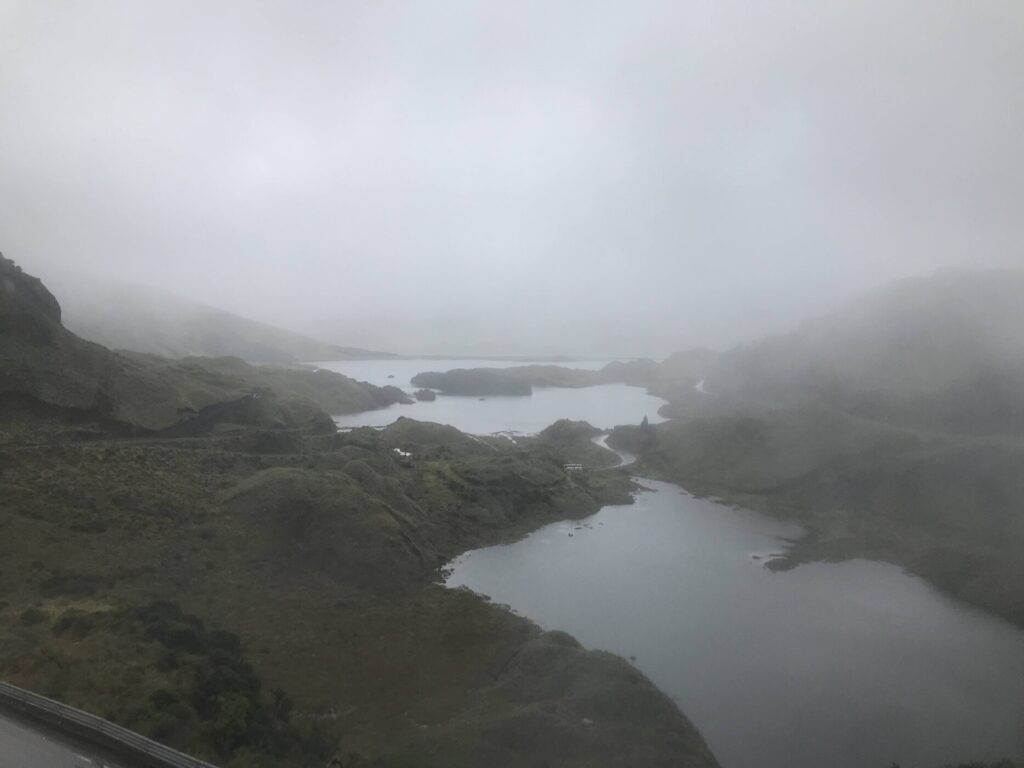
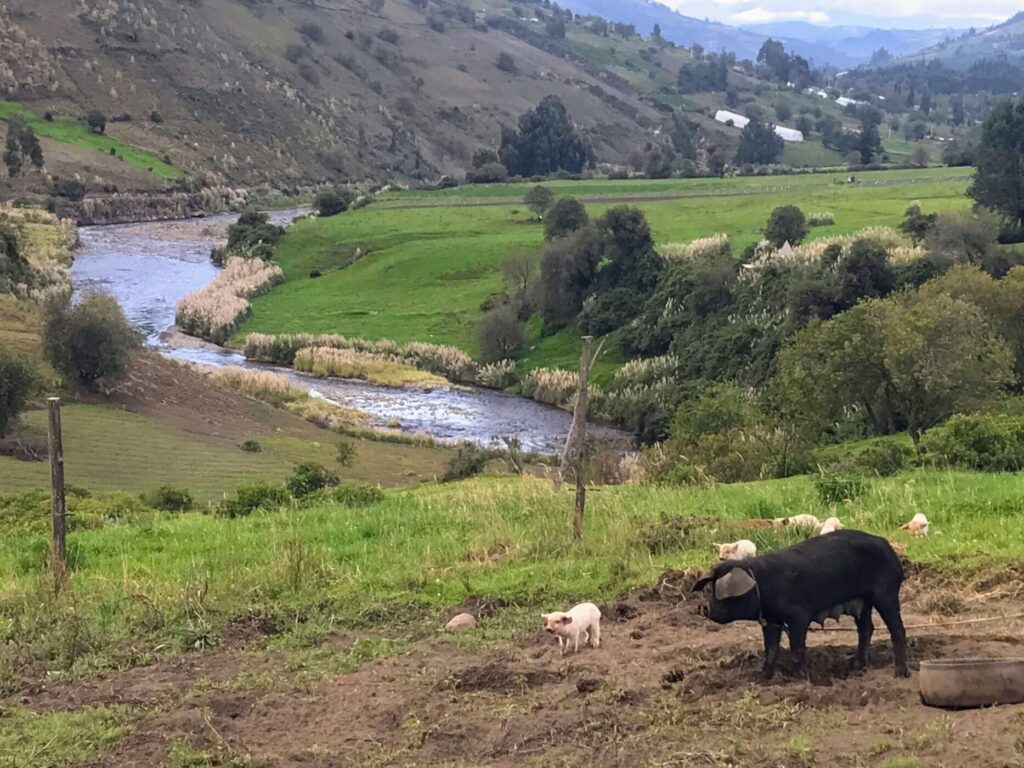
Day 12: An Epic Detour
This entry was supposed to be boring. Instead, it was one of the most fascinating days of our trip.
Two months ago, a small town along our five-hour drive to Cuenca was tragically buried in a landslide. A section of the main highway through the region ran along the ground that had fallen away. There was now a gaping abyss. The police had erected a large metal fence miles before we reached the town.
We were diverted along a network of narrow paved, but horribly potholed, country roads. Then the pavement turned into gravel. We ascended above the clouds. It was clear that these roads had seen very few American families in economy rental cars passing through. By the stares of the local indigenous people walking along the side of the road, they hadn’t seen much of us either.
We stopped often to get out and take photos. At one point we got out and marveled at the wispy clouds zipping by at eye level.
The gravel then disappeared and turned into lumpy dirt. We entered a thick fog. The bottom of our low riding Kia Picanto scraped over mounds of dirt. It started to rain. Our giddiness turned into terror at the thought that the road could fall away at any minute in a mudslide. We inched our way down the treacherous switchbacks that led us back down to earth, and the paved highway.
In the late afternoon, we made it to Cuenca and celebrated one more day of life with a fancy dinner next to the Catedral de la Inmaculada Concepción.
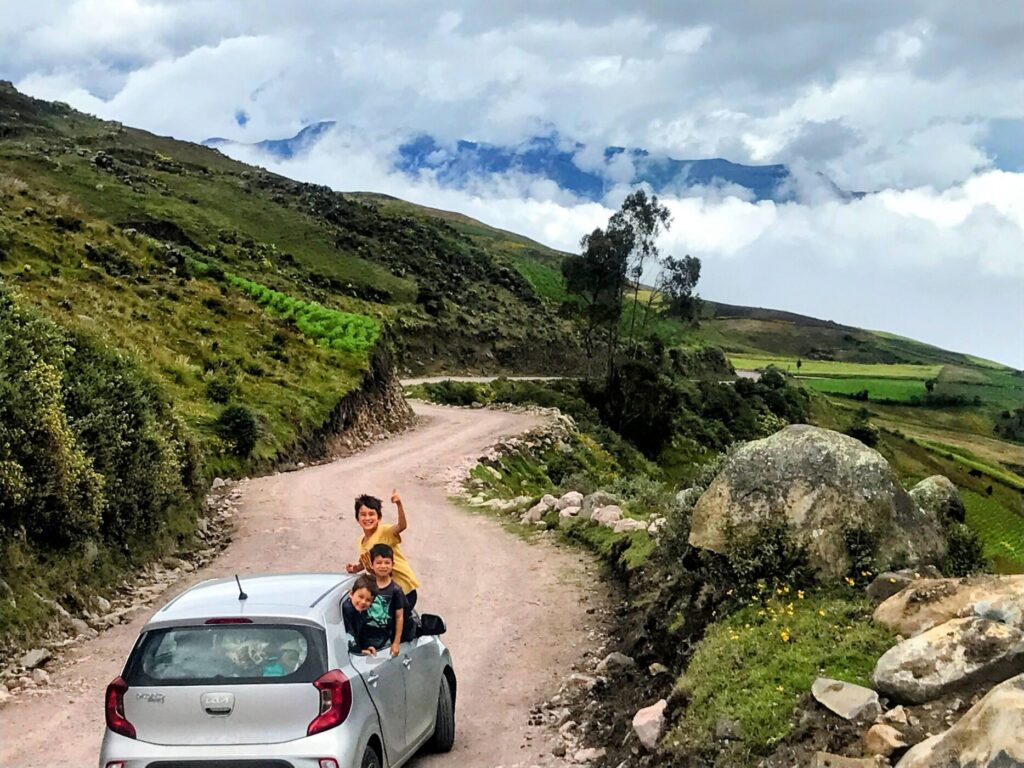
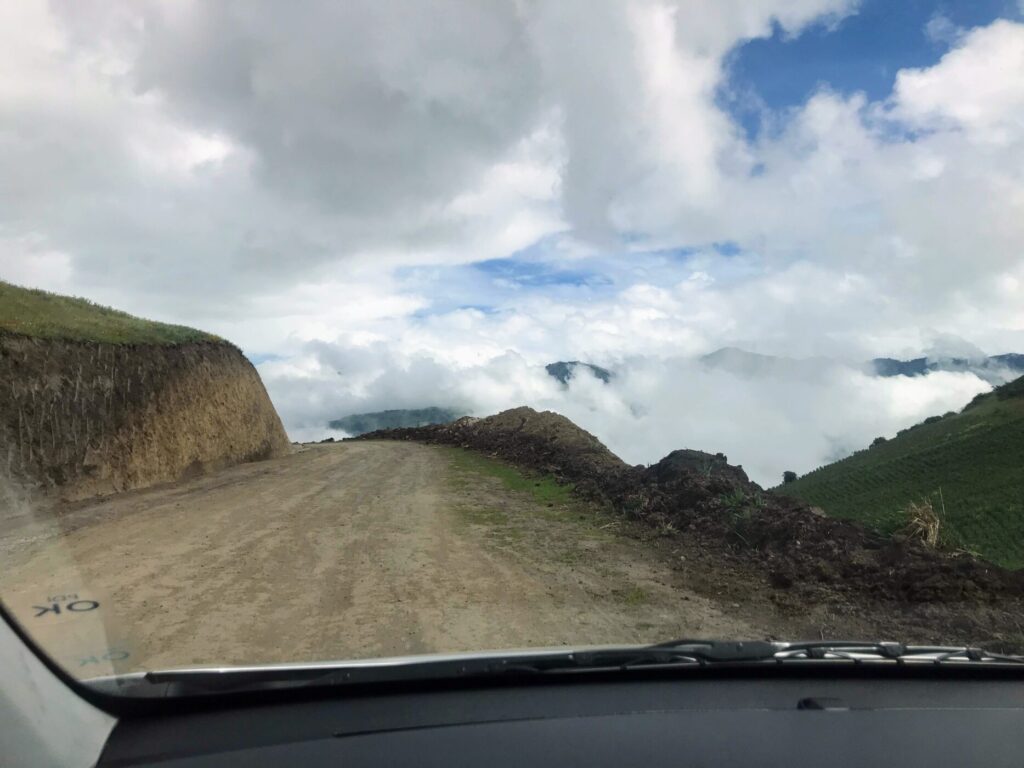
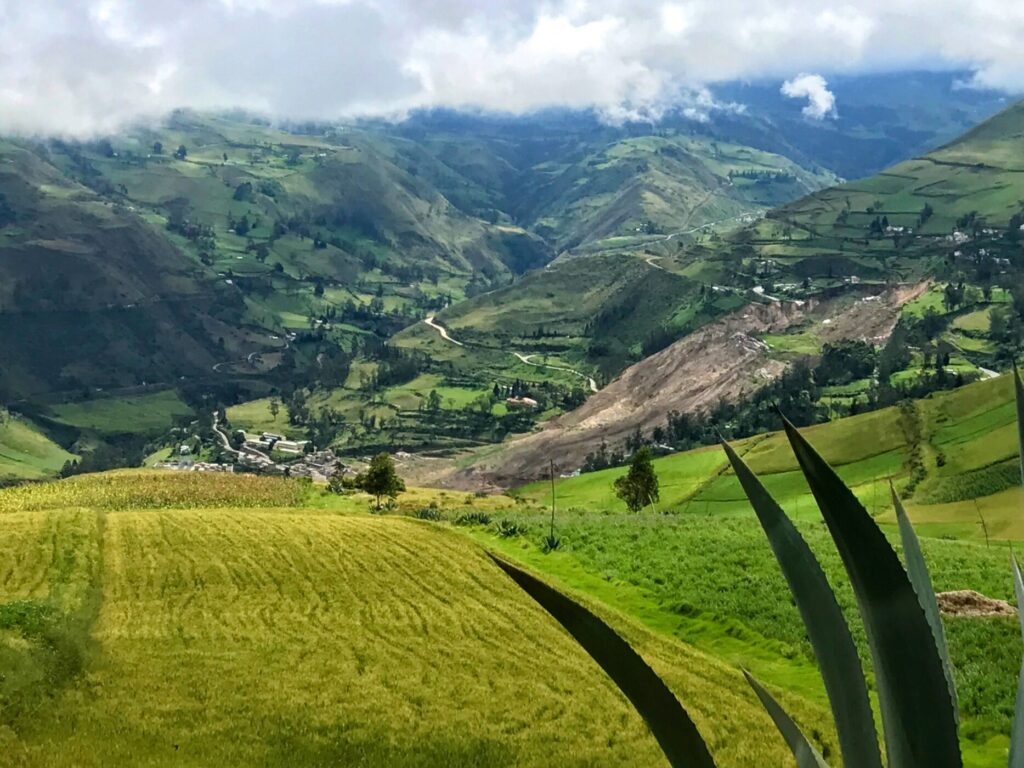
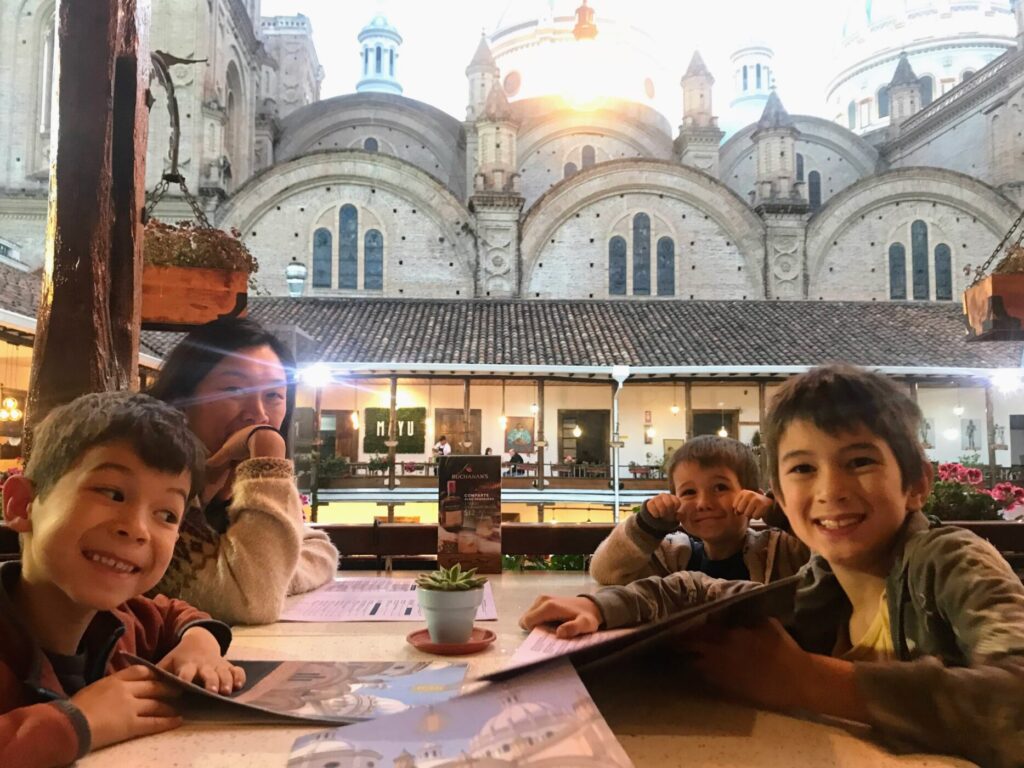
Day 13: Incan Ruins and Money in Cuenca
We trekked our way back to the historic district of Cuenca today, in search of some world-schooling education. Cuenca is one of the oldest colonial cities in Ecuador, and walking through the old town feels like being transported back to some quaint European city, full of cafés and ornate gilded balconies. Cuenca was populated long before the Spanish conquistadors came, serving as a sacred site and administrative headquarters for the Incan empire but also a fertile river valley for the many people groups who came and went even before the Incas.
We ended up at Museo Pumapungo, built around some Incan ruins at the edge of the Rio Tomebamba. The kids enjoyed the miniature dioramas of life since cavemen times, and we each stated which era we’d rather live in. Oliver chose the colonial era: “There was more medicine so you would’ve lived longer.” Finley chose the era before the Incan Empire took over: “It looks nice,” he said, pointing to the little fields of corn and human figures crouched over animal skins.
We discovered the Museum of the Central Bank of Ecuador in the basement, which was a treat for the boys who have been engrossed in finding coins. Oliver, as we mentioned in the first entry of this week, spent his found dollar coin on candy. Finley recently found a Peruvian Sol in the crack between the mattress and bedframe at our last hostel. So seeing all the renditions of money through the ages, from rare gem necklaces to hand-forged Spanish reals to Ecuadorian sucres and now US dollars (Ecuador’s adopted currency since 2000, when the sucre’s inflation made commerce practically impossible), was thrilling for them.
